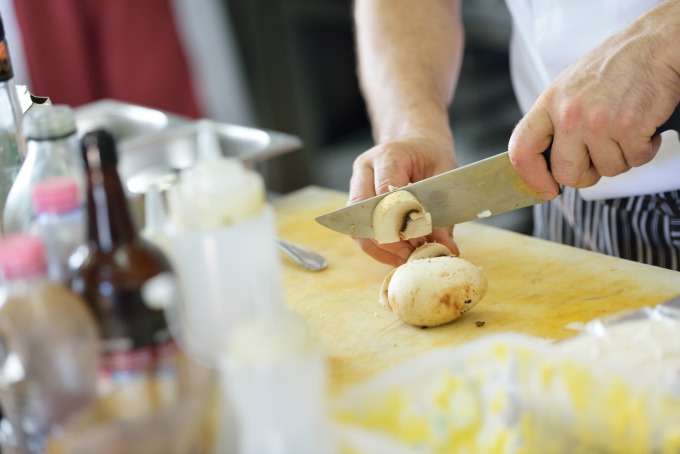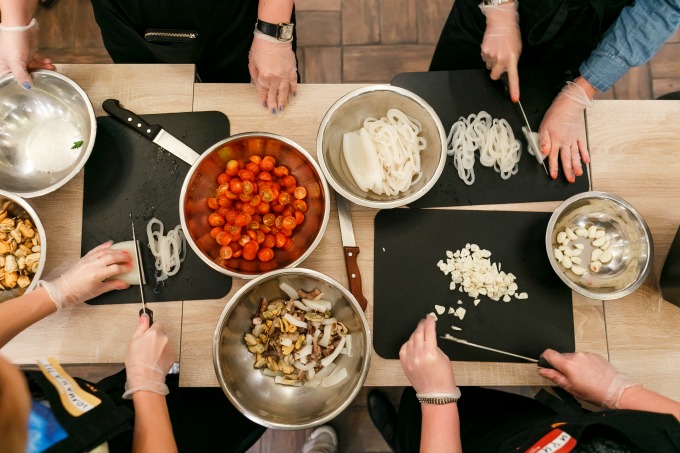When you combine a love for food with the knowledge and skills of cooking, you can easily turn this passion into a profitable business venture. One of the easiest ways is by offering cooking classes in your community. Whether you have your own restaurant, a big kitchen in your home, or access to a commercial kitchen, it’s possible for anyone to teach cooking classes. There are different types of classes that can be offered including basic cooking classes, niche cooking classes or advanced cooking lessons. This can be a lot of fun, and a great way to make money. However, as with any business, it needs to be treated as such. Below are some great tips on how to start cooking classes as a business venture.

Determine Classes To Offer
Like stated earlier, there are many types of cooking classes that can be offered. The best type of class to offer would be in an area that you are an expert in. As an example, if you’re good at cooking Mexican food, then you could offer traditional Mexican style cooking classes. Maybe your knife skills are amazing. You could offer a series of classes on how to slice, dice, and julienne just about anything. Make a list of the type of foods you’re known for, the kitchen skills you have, and see where there could be an opportunity to create a class.
Your classes should be well planned out before you even market them. Take time to create a plan for you to follow during the class time. While you don’t have to plan every single minute of the class, you’ll want to ensure you cover all of the important points. Students will leave class with a positive experience and cooking knowledge to take home with them. They’ll also be eager to sign up for another class. A well planned class will make teaching easier and help the class go smoother.
Get Educated
The best way to learn about teaching cooking classes is to attend cooking classes yourself. When you attend other cooking classes, take notes as to how the class is organized, and how well the instructor works with the attendees. Seeing how others teach is a great way to learn and improve your own teaching skills. You’ll want to attend classes from a reputable school. Take a look into your local colleges, as many have hospitality programs that offer continuing education classes in cooking.

Business Licenses
You’ll want to get legal. In many areas, this isn’t nearly as difficult as it sounds. Before you start your cooking classes, you need to check with your local county clerk’s office and health department to see what you need. Verify if you’ll need any special permits or licenses to operate your classes. Even though you won’t specifically be selling food, you still need to follow the rules and regs, and may have to get regular inspections from the health department. Just like commercial establishments do.
Gathering Up Equipment
The first step to teaching cooking classes is to have a space, and make sure you have everything you’ll need. If you’re offering classes where the students will be cooking, be sure that you have enough food, materials and kitchen space for everyone. If your space is ill-equipped for the number of students who are interested, see if you can rent space. Another option is to offer your classes at local restaurants or retail spaces. This could be good marketing for them and it works well for your classes. If you can’t find space in those places, you could try to find a local school or church to rent kitchen space from.

Marketing And Promotion
It doesn’t matter how great your classes are and how well-prepared you are if no one signs up. You need to treat your cooking classes like a business. You’ll want to create a name for your business as well as a logo. Once you have that done, design some business cards and explore marketing opportunities. There are many ways to market your classes. Consider creating a website, putting up flyers, and using social media to get the word out. Word of mouth is also a great way to build a clientele, so make sure that your classes are something people want to recommend.
Get Help From Experts
Starting a cooking class on your own can be a daunting task. The good news is there are cooking classes’ platforms that have streamlined parts of the process. Cozymeal, a cooking classes marketplace, provides professional chefs with tools to create and manage their classes, and guidance on the best practices. Check examples of their cooking classes here, here, and here.
Even with all of these tips, it’s best to start small. Beginning with larger classes or trying to plan out a class for a very difficult recipe or cooking style could result in a disaster. The first few classes should only have a few students so that you can get a feel for what it’s like, Be sure to get reviews and feedback from your students in order to reevaluate and make changes for classes in the future.
